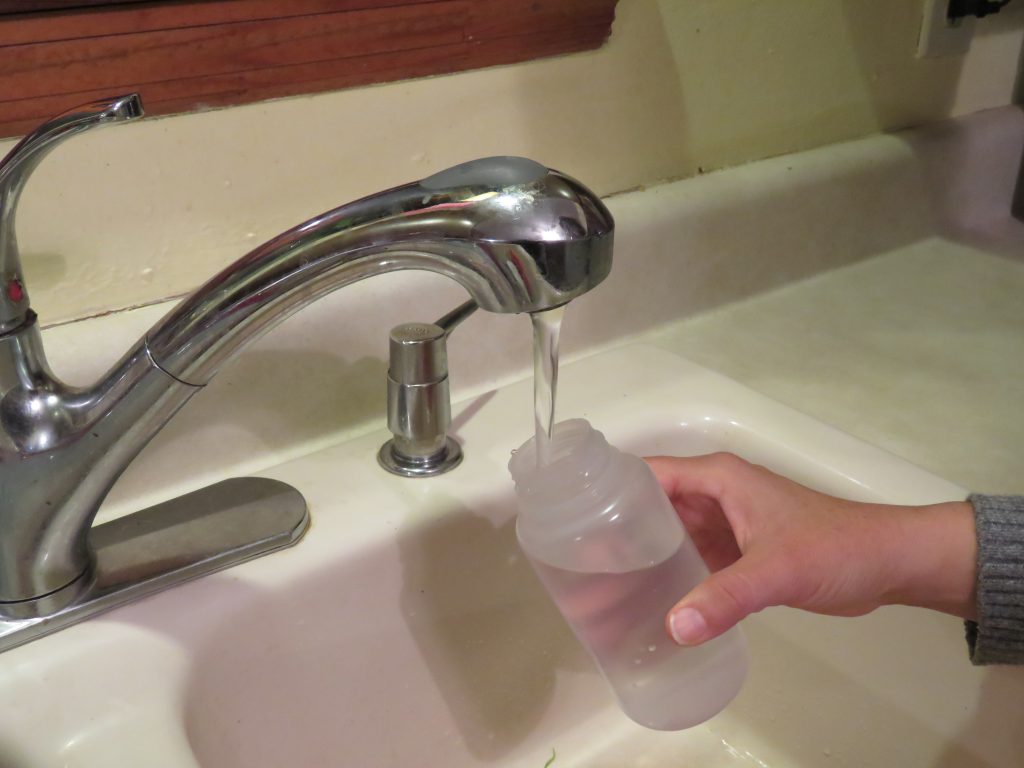If your private well was damaged or flooded due to hurricane or other heavy storm activity, your well water may not be safe to drink. Well water should not be used for drinking, cooking purposes, making ice, brushing teeth or bathing until it is tested by a certified laboratory for total coliform bacteria and E. coli.
Residents should use bottled, boiled or treated water until their well water has been tested and deemed safe.
- Boiling: To make water safe for drinking, cooking or washing, bring it to a rolling boil for at least one minute to kill organisms and then allow it to cool.
- Disinfecting with bleach: If boiling isn’t possible, add 1/8 of a teaspoon or about 8 drops of fresh unscented household bleach (4 to 6% active ingredient) per gallon of water. Stir well and let stand for 30 minutes. If the water is cloudy after 30 minutes, repeat the procedure once.
- Keep treated or boiled water in a closed container to prevent contamination
Use bottled water for mixing infant formula.
Where can you have your well water tested?

Contact your county health department for information on how to have your well water tested. Image: F. Alvarado Arce
Most county health departments accept water samples for testing. Contact your local department for information about what to have your water tested for (they may recommend more than just bacteria), and how to collect and submit the sample.
Contact information for Florida Health Departments can be found here: County Health Departments – Location Finder
You can also submit samples to a certified commercial lab near you. Contact information for commercial laboratories that are certified by the Florida Department of Health are found here: Laboratories certified by FDOH
This site includes county health department labs, commercial labs as well as university labs. You can search by county.
What should you do if your well water sample tests positive for bacteria?
The Florida Department of Health recommends well disinfection if water samples test positive for total coliform bacteria or for both total coliform and E. coli, a type of fecal coliform bacteria.
You can hire a local licensed well operator to disinfect your well, or if you feel comfortable, you can shock chlorinate the well yourself.
You can find information on how to shock chlorinate your well at:
- Blog ‘How to effectively disinfect a private drinking well’ by UF/IFAS Water RSA Yilin Zhuang
- Texas A&M’s AgriLife Extension Service also provides detailed instructions on shock chlorination in both English and Spanish: Shock chlorination brochure in English and Spanish
After well disinfection, you need to have your well water re-tested to make sure it is safe to use. If it tests positive again for total coliform bacteria or both total coliform and E. coli call a licensed well operator to have the well inspected to get to the root of the problem.
Well pump and electrical system care
If the pump and/or electrical system have been underwater and are not designed to be used underwater, do not turn on the pump. There is a potential for electrical shock or damage to the well or pump. Stay away from the well pump while flooded to avoid electric shock.
Once the floodwaters have receded and the pump and electrical system have dried, a qualified electrician, well operator/driller or pump installer should check the wiring system and other well components.
Remember: You should have your well water tested at any time when:
- A flood occurred and your well was affected
- The color, taste or odor of your well water changes or if you suspect that someone became sick after drinking your well water.
- A new well is drilled or if you have had maintenance done on your existing well
- There has been any type of chemical spill (pesticides, fuel, etc.) into or near your well
The Florida Department of Health maintains an excellent website with many resources for private well users: FDOH Private Well Testing and other Reosurces which includes information on potential contaminants and how to maintain your well to ensure the quality of your well water.
- Septic System Do’s and Don’ts After Flooding - October 8, 2020
- After flooding, test your well water - October 1, 2020